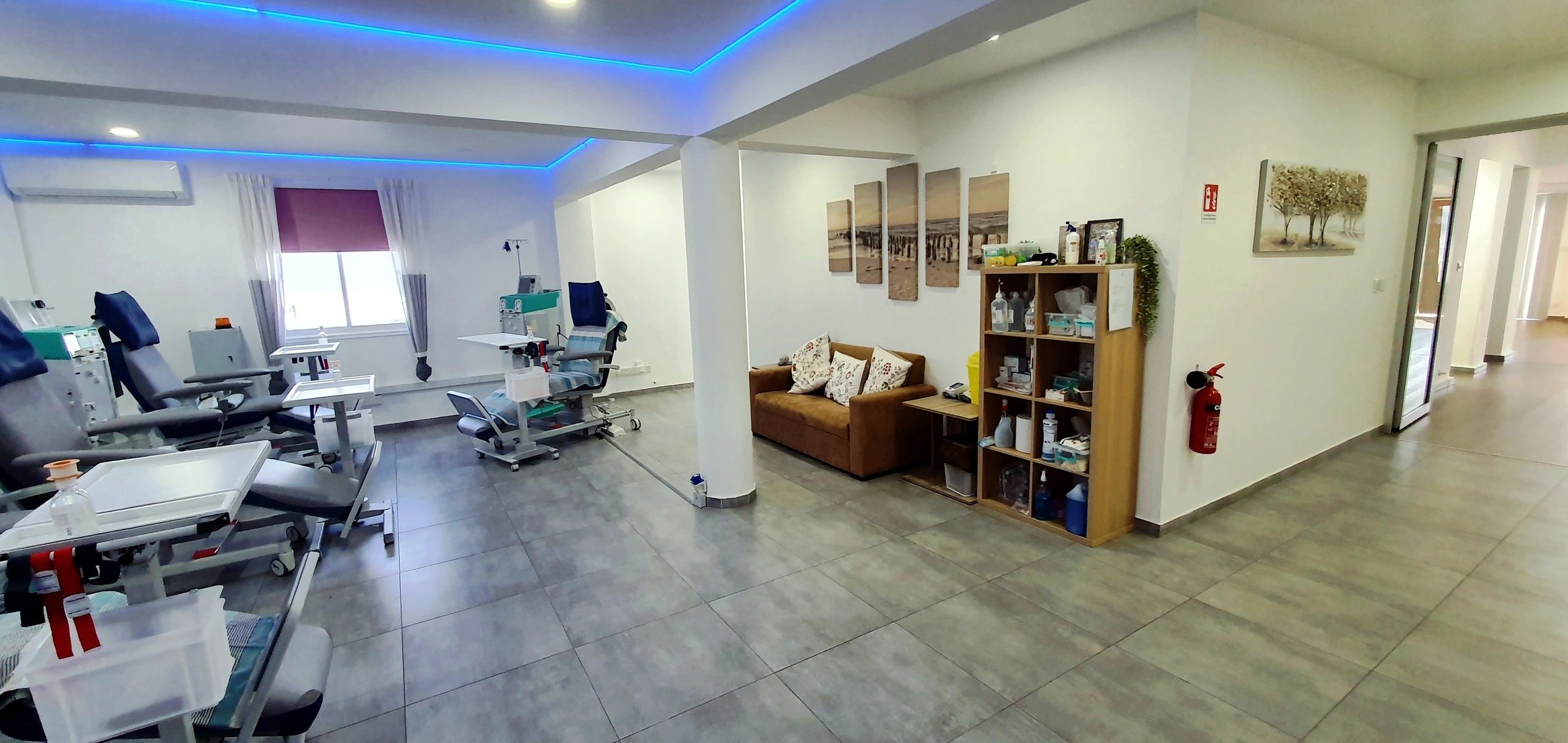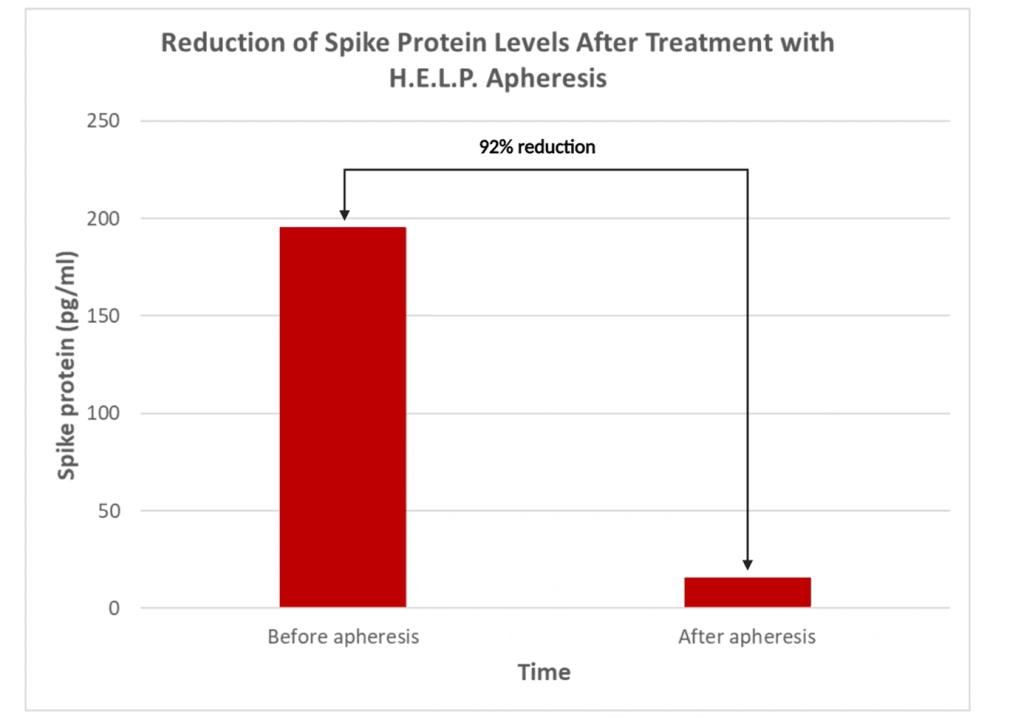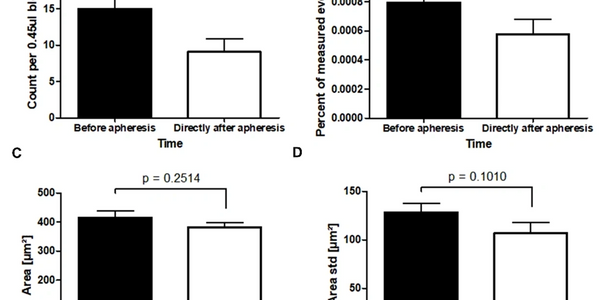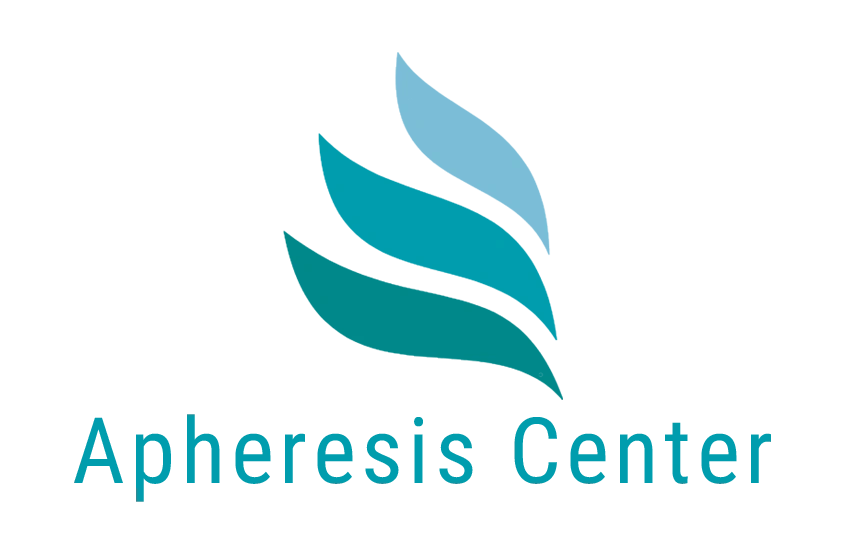
H.E.L.P. Trattamento di aferesi per Covida Lunga, Sindrome Post Vac e Malattie Croniche
Quali sono i vantaggi di H.E.L.P. Apheresis for Long Covid?
H.E.L.P. (Heparin-induced Extracorporeal LDL Precipitation) Apheresis is an extracorporeal (=outside of the patient’s body) blood treatment that has been in use for over 40 years with great success. It was initially developed as a treatment for microcirculation and blood flow issues and excess cholesterol. The treatments biggest strength is to resolve microcirculation and blood flow disorders whilst at the same time removing hundreds of pathogens, inflammation proteins, viral persistence/spike proteins and cholesterol+autoantibodies from the blood.
Selected scientific sources and studies for H.E.L.P. Apheresis used in Long Covid/Post Vac and microcirculation/blood flow disorders in Long Covid as well as H.E.L.P. Apheresis resolving microcirculation and blood flow disorders:
- ISFA 2023 (Conferenza mondiale della Società internazionale di aferesi)
- Diagnosi e trattamento delle malattie infettive Gavin
- Researchgate
- Springer
- Frontiere
- ScienzaDiretto
- Aferesi terapeutica e dialisi
- Rivista di Trombosi ed Emostasi
- Springer Nature
- Il Giornale Americano di Medicina
- PubMedCentral
- Scienza
‘During the H.E.L.P. Apheresis treatment numerous inflammatory mediators (CRP, cytokines, etc.) as well as any virus components/spike proteins present are filtered out. The cleaned blood is returned to the patient.
È stato dimostrato nei pazienti con Covida Lunga che microclots viene dissolto da H.E.L.P. aferesi e che la proteina spike viene filtrata legandosi all'eparina. Il numero di cicli di aferesi necessari varia da paziente a paziente e dipende anche dalla gravità dei sintomi.
Microcirculation and blood flow disorders are an official indication of H.E.L.P. Apheresis.’
(Fonte: B.Braun Germania / B.Braun Svizzera)
Come funziona H.E.L.P. Apheresis?
‘H.E.L.P. (heparin-induced extracorporeal LDL precipitation) apheresis is a treatment method that has been in use for decades and was initially developed as a treatment option for refractory lipid metabolism disorders. Over time, other medical indications were added that are a result of a microcirculation and blood flow disorder, such as idiopathic hearing loss and dry macular degeneration as well as Multiple Sclerosis.
During the H.E.L.P. procedure, the plasma is first of all separated from the other components that make up the blood. Heparin and an acetate buffer are then added, which lower the plasma’s pH. This changes the surface charge of LDL-C, Lp(a) and other substances, which leads to increased binding to the heparin used. In addition to LDL, the process also filters out various inflammatory mediators (CRP, cytokines, etc.) as well as any virus components or spike proteins present. The resulting precipitates are filtered out and subsequently removed from the plasma in circulation through the machine.’
‘The excess heparin is eliminated by adsorption. The physiologic pH is then restored by removing the buffer solution via dialysis. Finally, the purified blood is returned to the patient at the end of the treatment.
Sulla base della letteratura recente, la presunta formazione di microclots in campioni di sangue di soggetti sani può essere resa visibile al microscopio aggiungendo proteine spike. È già stato dimostrato in pazienti affetti da Long Covid che questi microclots vengono dissolti mediante H.E.L.P. aferesi e che la proteina spike viene filtrata legandosi all'eparina.
The number of rounds of apheresis required varies from patient to patient and also depends on the severity of the symptoms.’
Fonte: B.Braun
Aiuto L'aferesi rimuove/assorbe le seguenti sostanze dal sangue:
- Fibrinogeno, altri fattori di coagulazione e microclots (aumenta la microcircolazione del 20% e libera i piccoli vasi sanguigni riducendo la viscosità del sangue di circa il 10%)
- Modulatori infiammatori/proteine come CRP, citochine e chemochine (che riducono l'infiammazione)
- virus SarsCov2 e proteine/frammenti spike (legandosi all'eparina utilizzata)
- Centinaia di agenti patogeni a base di proteine
- Colesterolo LDL e Lp(a) (migliora la funzione dell'endotelio e la fibrinolisi) + autoanticorpi ad esso legati
La nostra presentazione completa su H.E.L.P. Aferesi e terapia combinata è disponibile qui:
Ulteriori informazioni sull'inventore di H.E.L.P. Apheresis, il Prof. Dr. med. Dr. h. c. Dietrich Seidel:
Sul nostro blog troverete informazioni esaurienti sui diversi tipi di aferesi e su quale tipo è adatto a quale scopo QUI
Riduzione della proteina spike SarsCov2 mediante aferesi H.E.L.P.

Riduzione dei livelli di proteina spike (pg/ml) dopo il trattamento con H.E.L.P. Apheresis. È stata osservata una riduzione del 92% della proteina spike.(Fonte: State of the Art H.E.L.P. Apheresis: Advances in Management of COVID-19, Long COVID, and Post-COVID-19 Vaccination Syndrome)
Riduzione di Microclots mediante H.E.L.P. aferesi

Analysis of microclot-like structures from RT-DC measurements of 0.45 µl of whole blood. A-D. Bar plots of n = 16 patients (repeat samples were not received for three patients). A. Count of microclot-like structures per 0.45 µl of blood. B. Microclot-like structures expressed as a percentage of all measured events (blood cells and cell agglomerates). C. Projected area (µm²) of microclot-like structures. D. Standard deviation of the projected area (µm²) of microclot-like structures. (Source: State of the Art H.E.L.P. Apheresis: Advances in Management of COVID-19, Long COVID, and Post-COVID-19 Vaccination Syndrome)
Part One: Microclots inside of human blood vessels – graphic animation and explanation
Microclots, piastrine iperattivate, danno endoteliale e infiammazione nella Covida lunga, nelle lesioni post-vaccinali e nelle malattie croniche. Fonte: cgtn.com
FAQ – Frequently Asked Questions
Please email us at info@apheresiscenter.eu if you cannot find an answer to your question
Selected scientific sources and studies for H.E.L.P. Apheresis used in Long Covid/Post Vac and microcirculation/blood flow disorders in Long Covid as well as H.E.L.P. Apheresis resolving microcirculation and blood flow disorders:
ISFA 2023 (International Society for Apheresis World Conference)
Gavin Infectious Diseases Diagnosis & Treatment
Researchgate
Springer
Frontiers
ScienceDirect
Therapheutic Apheresis and Dialysis
Journal of Thrombosis and Haemostasis
Springer Nature
The American Journal of Medicine
PubMedCentral
Science
A collection of sources which have published success rates can be found at the Long Covid Apheresis Community (LCA Community): https://lcacommunity.org/research
The results published by the LCA Community have been confirmed at the ISFA2023:
ISFA 2023 (International Society for Apheresis World Conference)
You will find extensive information on our blog post about different types of Apheresis and which type is suitable for which purpose HERE
Apheresis means ‘separation/extraction’: A separation of the big blood parts (white and red blood cells and blood platelets) from the rest of the blood (plasma) and extraction of pathogens.
But that is where the similarities of HE.L.P. Apheresis with ANY OTHER type of apheresis end.
H.E.L.P. Apheresis is in fact a ‘live laboratory process’ in a machine circuit.
Unlike any other form of apheresis it uses 400.000 units of heparin (heparan sulfate to be exact) in the extracorporeal machine circuit and it turns the blood plasma temporarily acidic to ensure the highest technically possible levels of selective pathogen adsorption in that environment. For one H.E.L.P. apheresis session 30 kilogram of one-use parts are used.
H.E.L.P. Apheresis is the ONLY type of apheresis specifically designed to resolve coagulation issues and interfere into the coagulation cascade. It increases microcirculation (blood flow in the small capillaries/blood vessels) by 20% whilst reducing the viscosity of the blood by 10% per session.
It is a highly selective (by means of adsorption – heparin precipitation) form of apheresis and has higher adsorption rates than any other form of apheresis. It does NOT use filtration (which is non-selective) but it uses adsorption/precipitation – this means it only takes out the pathogens (viruses/viral spike, bacteria, fungus, inflammation proteins, cholesterol+autoantibodies and hundreds of pathogens more) but leaves all other substances in the blood – hormones, messengers etc.
H.E.L.P. Apheresis has been successfully applied for:
– Long Covid
– Post Vac Syndrome / Vaccine Injury
– ME/CFS
– Lyme
– Fibromyalgia
– Multiple Sclerosis
– Lupus
– Other illnesses where microcirculation issues/blood flow issues, viral or bacterial persistence, inflammation proteins, cholesterol+autoantibodies or toxins/pathogens are present
Se il paziente soddisfa i requisiti (chiariti da un questionario), si procede a un colloquio e a una valutazione dettagliata del paziente. L'obiettivo è identificare la gravità dei sintomi e chiarire se sono soddisfatti i prerequisiti per l'uso di H.E.L.P. Apheresis nel senso dell'uso previsto del dispositivo Plasmat Futura.
I costi di 1685 euro per trattamento sono attualmente a carico del paziente. Naturalmente, il paziente può rivolgersi individualmente alla propria assicurazione sanitaria per ottenere la copertura dei costi.
H.E.L.P. apheresis is recognised in the EU and Switzerland for the indication of microcirculation and blood flow disorders and several other indications. The Plasmat Futura machines used for H.E.L.P. are EMA licensed and CE certified. Clinical studies for H.E.L.P. Apheresis in Long Covid have been published:
Pub Med Central
Gavin Publishers
The symptoms of Long Covid are enormously varied. Any organ system can be affected. Treatments carried out so far suggest that many of these symptoms can be successfully treated by improving microcirculation/blood flow. The amount of treatments needed is individual (we see in average 5-6 H.E.L.P. treatments over the last years per patient). Whilst the content of the precipitation filter and heparin adsorber are not always helpful to identify if further treatments are meaningful, the latest study has shown that venous oxygen measurement is of great help for better treatment direction.
H.E.L.P. apheresis is generally very well tolerated and has few complications. As with any treatment, there are risks and side effects. However, these are very rare and easy to control. For example, there may be haematomas at the injection sites, a short-term so-called vasovagal reaction or temporary fatigue. From the 500.000 treatments undertaken in the last 30 years, over 200.000 have been scientifically documented – this makes H.E.L.P. one of the best researched and safest treatments there is.
Since 2023 we do offer Triple Anticoagulation Therapy for microcirculation and hyper-coagulation issues, but only under certain circumstances. The Triple Therapy needs constant monitoring of the blood to minimize the risk of (brain and gut) bleeding. A physical presence of the patient at the clinic of 3-4 months is therefore necessary. The often strong side effects from toxins and pathogens being released into the blood of the patient need to be controlled with steroids and antihistamines. We follow the original protocol that was published by Dr. Jaco Laubscher.
The differences between H.E.L.P. Apheresis and Triple Anticoagulation Therapy:
– If your local GP/PCP supports you and takes on the responsibility of constantly monitoring your blood while you are administered a combination of three anticoagulant medications at once (bleeding risk), the costs are lower than H.E.L.P. and you do not need to be present at the clinic for 3-4 months
– Patients often do suffer from constant side-effects of the Triple Therapy from toxins and pathogens being released into the blood. Steroids and antihistamines are a way to reduce them
– H.E.L.P. Apheresis has a higher safety profile with over 30 years of scientific data behind it
– H.E.L.P. Apheresis does not only remove the microclots from the blood but also does remove inflammation, viral spike protein, cholesterol+autoantibodies and hundreds of pathogens and furthermore it reduces the viscosity of the blood around 10% per treatment and increases the microcirculation by 20% in total.
We do only recommend Triple Anticoagulation Therapy in first 6 months after infection/onset and/or if your local GP/PCP supports and monitors it.
From our clinical experience H.E.L.P. Apheresis as part of the Combination Therapy is preferable and shows better results. The individually adapted Combination Therapy often does include anticoagulation and fibrinolytic protocols.
In Triple Therapy the body needs to deal with all the toxins and pathogens released from the microclots. Through H.E.L.P. Apheresis all toxins and pathogens are taken out of the blood by the apheresis machine and it furthermore does not only get rid of the microclots but does additionally remove inflammation proteins, viral spike protein, cholesterol+autoantibodies and hundreds of pathogens and reduces the viscosity of the blood around 10% per treatment whilst increasing the microcirculation by 20% in total. This means it has several modes of action instead of just a single mode like triple therapy.
Advantages:
– No stinging with needles required (sometimes with Long Covid damaged veins several tries with the needles despite ultrasound are needed, sometimes there can’t be any proper blood flow established, sometimes veins shrink under stress or from a bradykinin shock)
– No constant kneading of therapy/stress ball to maintain blood circulation at needed level needed (ideal if you have fatigue)
– No constant visibility of blood/needles (good if you have anxiety/fear of needles and blood)
– You don’t need to keep your arms with needles inside still for hours
– No risk of penetrating the backside of the vein if you accidentally lift your arms
– You can sleep during treatment
– You can go to toilet during treatment
– You don’t have to get needles placed for every treatment
– The blood flow volume is higher – 20% more efficiency, higher amount of plasma treated, shorter treatment duration, less burden on the body
– You can eat and watch a movie or even work on the laptop during treatment – your hands are free
– In case of low blood flow the catheter is closer at the bodies center (upper leg) that enables treatment even with lower blood pressure
– works as constant reminder so you will pace much better
Disadvantages:
– Cost of 1000 to 1100 Euros (depending on the size/make of the catheter – this ‘pays for itself’ after 4-5 treatments as with catheters in average 20-25% more plasma volume can be processed and the constant flow speed technically leads to a higher adsorption rate)
– Can feel inconvenient at times
– Restricted movement (max. a few hundred meters radius a day or less is recommended to avoid irritation of the vein) – but many patients reported in return it helped to pace well
– Medical risks: 4 in 100.000 will suffer from nerve damage/irritation next to the vein when the catheter is placed and the risk of clotting is increased (which can be minimized by the anticoagulants being administered and by not moving too much). In rare cases the exit point can get inflamed and antibiotics need to be administered, waterproof covers and special catheters avoid that very well.
For placement durations over 21 days the anti-pathogenic protect catheters we use avoid issues reliably (below 21 days classic catheters are used and if the duration unexpectedly increases, antibiotic treatment is applied for safety precautions). The protect coating creates a catheter surface with very good anti-pathogenic characteristics. The adhesion of bacteria, which is normally the starting point of a catheter-related bloodstream infection, is effectively prevented in this non-leaching catheters. Examples: brochure for download here and watch the video here (Source of both: B.Braun.com)
You can find explanation videos about H.E.L.P. Apheresis with apheresis needles access and with leg catheter access click here for videos
H.E.L.P. Video di aferesi per il trattamento con Covida lunga
H.E.L.P. Apheresis – How does it work? A simplified (non-medical) explanation.
Il nostro paziente Jeremy ci ha permesso di filmare il suo trattamento di aferesi H.E.L.P. n. 8, in modo che le persone possano avere una visione dettagliata prima di sottoporsi al trattamento stesso. Abbiamo cercato di spiegare le cose in modo molto semplice e comprensibile, sacrificando un po' di precisione medica e scientifica per rendere più facile la visione.
You find Jeremy’s interview about his treatment experience click here to see
Video sull'accesso al catetere
H.E.L.P. Aferesi con accesso al catetere della gamba
Our patient Stephen allowed us to film his H.E.L.P. Apheresis treatment, so that people can get an insight on how the treatment works with the use of a catheter (a special apheresis catheter is used if you have very small veins, bad/affected veins that make them inaccessible with apheresis needles, or in some cases if your apheresis needles keep getting blocked). You can find more information on catheters at the bottom of the in the FAQ section here
H.E.L.P. Video sulla preparazione/adescamento della macchina per aferesi
Circa un'ora prima del trattamento, i 30 kg di liquidi (NaCl, Acetato, Bicarbonato, Eparan Solfato) e i tubi, gli adsorbitori e i filtri devono essere preparati, collegati e quindi la macchina Plasmat Futura deve essere lavata, testata e preparata e sottoposta a diversi autotest meccanici per verificare che tutte le pompe, i morsetti, i sensori e l'elettronica siano precisi e funzionanti al 100% (questo processo è chiamato priming).
Argomenti che non sono stati trattati/spiegati nei video:
- Argomenti che non sono stati trattati/spiegati nei video:
- Disinfection prior to the treatment / use of liquid gloves
- Covid rapid tests and unmasking
- Blood panel/test prior to treatment
- Doctor’s assessment and interview prior to treatment
- Preparation and test of the machine/safety precautions
- Preparation of the catheter (flushing with aspirator) which will cause the sterile protection sheet to be slightly stained
- Other medical/safety factors before/during/after the treatment
- Instructions of the patient how to take care of the needle stitches/catheter and optimal hydration/nutrition/rest after the treatment
- Attenzione: In questi video non utilizziamo un linguaggio/descrizioni precise, ma solo a scopo dimostrativo. Jeremy e Stephen non sono più sensibili alla luce, ai suoni e ai movimenti, quindi non abbiamo dovuto prendere particolari precauzioni.
Attenzione: In questi video non utilizziamo un linguaggio/descrizioni precise, ma solo a scopo dimostrativo. Jeremy e Stephen non sono più sensibili alla luce, ai suoni e ai movimenti, quindi non abbiamo dovuto prendere particolari precauzioni.
Documentario di ARTE TV "Long Covid - Healing in Cyprus" (Lungo Covid - La guarigione a Cipro)
ARTE TV Documentary ‘Long Covid – Healing in Cyprus’ about our Apheresis Center
The documentary aired in June 2024. A team of journalists from European TV channel ARTE TV accompanied three of our Long Covid and Post Vac Syndrom patients and interviewed them and our team at the Apheresis Center. Here you can watch an excerpt of the documentary which is also easy to watch for patients with cognitive dysfunction, brainfog and related migraines. English audio by Dubly.
Since the documentary was filmed, new scientific findings have been made, you can find the latest studies published here.
Markus has published a blog post here, where he describes the developments and updates since the documentary was filmed.

